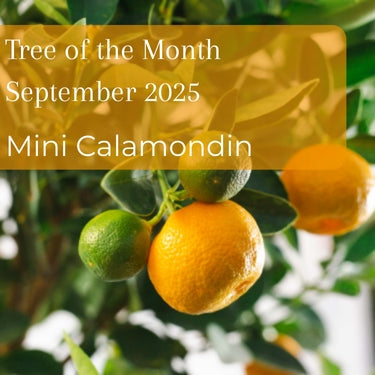Hello everyone, here is a very special blog post from our friends at the Moss Cider Project. They tell us all about how they got started and then give us the low down on how to make cider :)... so without further ado!
So in being asked to write a guest blog post about cider you're probably wondering how and why The Moss Cider Project came about. I won't bore you with the long version but here's how it goes. As residents in Moss Side we were aware of the impending demolition of the Stagecoach bus depot that sits opposite Alexandra Park on the A5103 (The Parkway). It's a huge site and will likely soon become one of the largest developments in Manchester. We brainstormed ideas about what we'd image on the site and I had visions of green spaces and orchards. The thought to make cider was already there, but it was only while in bed that night that I realised we'd be making cider in Moss Side… Moss Cider was born.
 The Moss Cider Project crew having a good time!
The Moss Cider Project crew having a good time!I thought why wait until the development happens before we have our orchards. Manchester is our orchard. There are hundreds of trees out there whose fruit drops to the ground every year. They're in parks, gardens, private and public spaces and now we're building a database of those locations so we can pick them every year. We'll use any apples to make our cider, from Crab to Bramley.
To make the cider we wash the apples and that gives us a chance to do a bit of quality control, removing any loose leaves and twigs. They're then ready to go into our Scratter, this hand-cranked machine chops the apple into small pea-sized pieces that allow for the juices to be squeezed out without it being complete mush resulting in a very cloudy/bitty juice.
 Using a traditional press to get the juice from those delicious apples
Using a traditional press to get the juice from those delicious applesThen it's into our traditional crossbeam press. We use a straining bag to prevent any small pieces of apple finding their way into the barrel. Then the fun begins, it's just patience and elbow grease and watching the juice flow out into a jug at the bottom. I think any cider maker will agree that home-pressed juice is the best you'll ever taste.
So we've got our juice and it's ready to turn into cider. I'd recommend using Camden tablets to kill of any micro organisms at this stage, these can be added to the sterilised container that you'll be fermenting in.
It's at this stage that having a PH meter and a hydrometer are very useful. The PH meter will help you know what sulphites may need adding. Depending on taste and the readings you may find you need to add malice acid to increase acidity or precipitated chalk to reduce the acidity. Tannin can be added as this naturally occurring substance is what gives cider apples their distinctive flavour. Garden variety apples often have low tannins so if you can add a small number of crab apples to your cider you can avoid having to add tannin altogether. As for yeast, there are natural yeasts in the apples and these can even build up in the equipment you use. Some cider makers treasure their press cloths as these hold the yeasts year on year. I'd recommend adding yeast as you'll guarantee a good fermentation this way. At this stage you can add sugar to up your alcohol content in your finished product. That's where having a hydrometer is important not only will it tell you how alcoholic your cider will be, it'll also help when it comes to knowing if your cider is ready for bottling. For a full list of added ingredients I'd recommend wineworks who not only stock a great range of homebrew products they've also got info sheets on how to make cider. It's how we learned.
 Making Cider is always fun
Making Cider is always funNow despite doing all the above I'd also recommend that for a small portion of the above you ignore the lot. Just go "organic" on a small batch of your juice. It's riskier as you don't know what nasties might be in your juice to start. But that should be the job of the natural yeasts in your juice to kill anything bad off. Just make sure that every that is going to touch the juice is super-clean and sterilised. I can't stress that enough, the last thing you want to do is contaminate your cider. You never know, you might create an award-winning beverage and it will taste totally different to the juice with all the added sulphites. Nothing beats cider created in this way.
So once you've done the above you'll just need to attach a fermentation lock to your container and wait patiently for 1st fermentation to happen. It usually takes between 5-14 days. After this you'll need to rack off your cider. One piece of equipment I didn't get at the start was an auto-siphon, get one, they really make the transfer of the cider far easier and cleaner. Don't be tempted by sucking on a piece of tubing!
You'll then need to rack off either into another clean sterilised container or bottles, it's just a case of waiting for your flavours to mature. I'd recommend putting it away for at least six months. We added a little (and I mean a little) to some of our cider after 1st fermentation and placed in swing-top (Grolsch-style) bottles. These can handle the pressure of the reactivation of the yeasts and mean you end up with a lovely sparkling cider, unsurprisingly it's a process called secondary fermentation.
 Having fun at the Moss Cider Project
Having fun at the Moss Cider ProjectSo that's the basics, making cider really is a fun and simple process but often people are put off by the cost of the equipment needed. But bottles and demijohns can be sourced from Ebay, the ingredients and fermentation tubs can be sourced from a local brewing supplier or from wineworks (or other suppliers). But if you're within 30k of Manchester you can skip all of that and allow us to do the hard work for you. If you bring us your apples we'll give you juice of cider in return for your contribution to the project.
- I hope you enjoyed today's blog post, remember to check out our apple trees and cider making trees.


